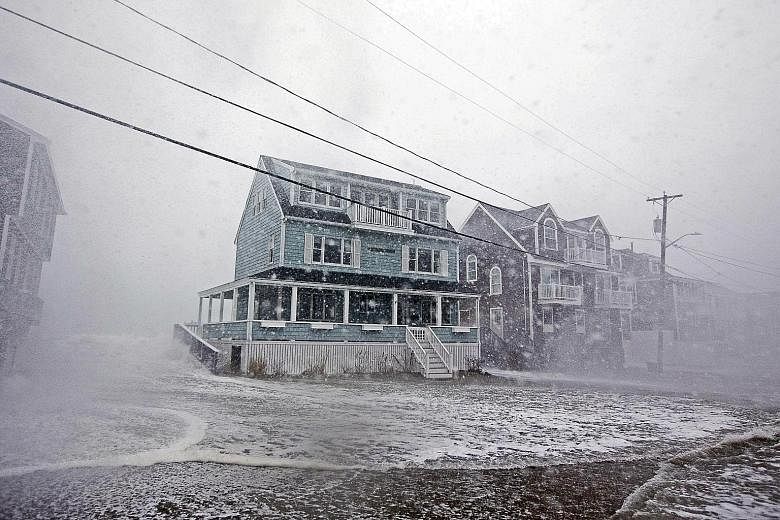WASHINGTON • After years of delays during the Trump administration, the Environmental Protection Agency (EPA) released its new climate indicators, which show Americans are already feeling effects on their health and safety.
Heatwaves across the country are more frequent, more intense and last longer. Wildfires are burning more land. The East and Gulf Coasts are flooding more often, while ice sheets are disappearing and sea levels are rising.
The figures are collected on the EPA's climate indicators website, which pulls data from more than 50 different organisations but had gone stale after Trump officials stopped updating it.
In addition to releasing fresh numbers on Wednesday, the organisation added new measurements including heatwave data, permafrost temperatures and residential energy use.
EPA administrator Michael Regan called the relaunch "long overdue", and said in a statement: "We now have additional data and a new set of indicators that show climate change has become even more evident, stronger and extreme - as has the imperative that we take meaningful action."
The message from the EPA is in stark contrast to its actions during the previous administration, when then President Donald Trump downplayed the effects of climate change, muzzled and sidelined scientists, and scrapped initiatives to curb emissions.
Since taking office, President Joe Biden has pushed climate action to the top of his agenda and worked to reverse many of his predecessor's actions.
The most recent decade was the warmest on record since observations began in 1880, with last year the second warmest year. Alaska, the North and the West showed the biggest changes in the United States.
Marine animals, too, are feeling the heat.
The data showed a steady climb in ocean temperatures, with some calculations putting 2020 at the top the charts.
As oceans warm, fish and other underwater life off the US coasts are shifting their range north and diving deeper to find cooler waters.
REUTERS

